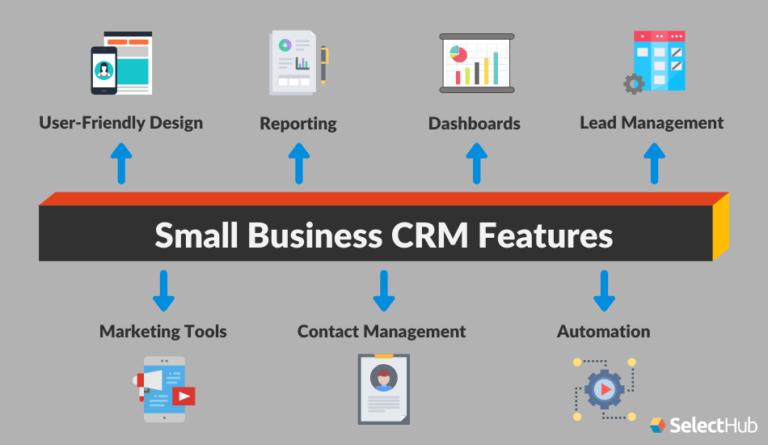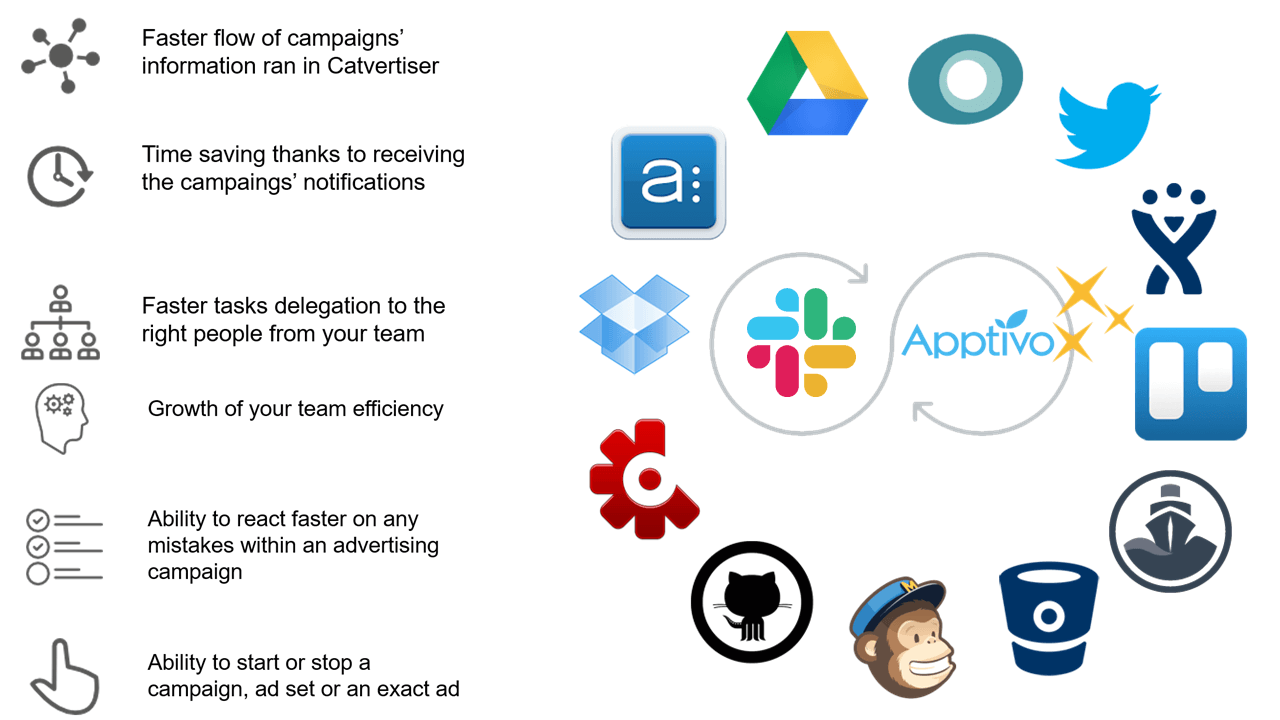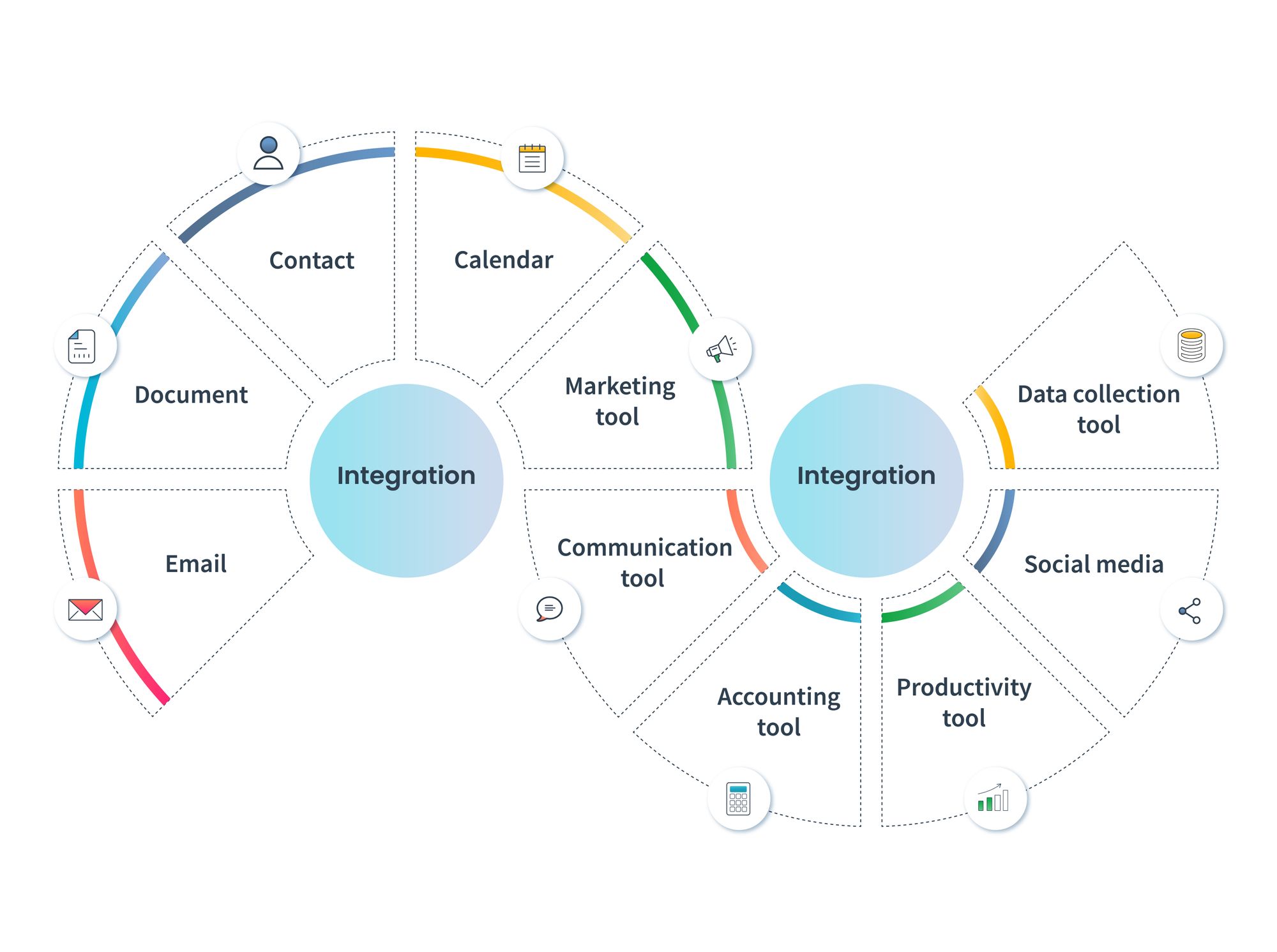
Introduction: Why Your Small Business Needs a CRM
So, you’re running a small business. Congratulations! You’re chasing your dreams, building something from the ground up, and probably juggling a million different tasks at once. One of those tasks, perhaps, involves managing your customer relationships. And that, my friend, is where a CRM – Customer Relationship Management – system comes in. If you haven’t already, it’s time to seriously consider setting one up. This isn’t just some fancy tech for the big boys; it’s a game-changer for businesses of all sizes, especially yours.
Think about it: How do you keep track of every customer interaction? Every email, phone call, meeting, and deal? Are you relying on spreadsheets, sticky notes, or (shudder) your memory? If so, you’re probably missing out on valuable opportunities to nurture leads, close deals, and build lasting customer loyalty. A CRM solves all of these problems. It’s your central hub for all things customer-related, a place where you can see the entire customer journey, from initial contact to repeat purchase.
This guide will walk you through the entire process of setting up a CRM for your small business. We’ll cover everything from choosing the right CRM to customizing it for your specific needs. We’ll also look at best practices for data entry, user adoption, and ongoing optimization. Get ready to transform your business and take your customer relationships to the next level!
Chapter 1: Choosing the Right CRM for Your Small Business
This is arguably the most crucial step. Choosing the wrong CRM is like buying a car that doesn’t fit your needs – you’ll end up frustrated and wasting valuable time and money. So, let’s break down the key factors to consider when selecting a CRM that’s perfect for you.
1.1. Understanding Your Needs and Goals
Before you even look at CRM options, you need to understand what you want to achieve. What are your business goals? What are your pain points? What do you hope to improve by implementing a CRM? Here are some questions to ask yourself:
- What are your primary business goals? (e.g., increase sales, improve customer retention, streamline marketing efforts)
- What are your current customer relationship challenges? (e.g., lost leads, disorganized data, difficulty tracking interactions)
- What features are essential for your business? (e.g., contact management, sales pipeline tracking, email marketing integration, reporting and analytics)
- How many users will need access to the CRM?
- What is your budget?
Answering these questions will give you a clear picture of your requirements, helping you narrow down your choices.
1.2. Key CRM Features to Look For
Now, let’s look at some essential CRM features. The specific features you need will depend on your business, but here’s a general overview:
- Contact Management: This is the foundation of any CRM. It allows you to store and manage contact information, including names, addresses, phone numbers, email addresses, and any other relevant details.
- Lead Management: Track leads through your sales pipeline, from initial contact to qualified lead to closed deal. This feature includes lead scoring, lead nurturing, and the ability to assign leads to sales reps.
- Sales Pipeline Management: Visualize your sales process and track the progress of deals through different stages. This helps you identify bottlenecks and improve your sales performance.
- Email Marketing Integration: Connect your CRM to your email marketing platform to send targeted emails, track opens and clicks, and automate email campaigns.
- Reporting and Analytics: Generate reports on sales performance, customer behavior, and other key metrics. This data will help you make informed decisions and improve your business strategies.
- Automation: Automate repetitive tasks, such as sending follow-up emails or updating contact information. This saves time and improves efficiency.
- Integration with Other Tools: Ensure your CRM integrates with other tools you use, such as your website, accounting software, and social media platforms.
- Mobile Access: Access your CRM data on the go, allowing you to stay connected with your customers and manage your business from anywhere.
1.3. Top CRM Options for Small Businesses
Here are some popular CRM options for small businesses, along with their key strengths:
- Zoho CRM: A comprehensive and affordable CRM with a wide range of features, including sales automation, marketing automation, and customer support tools. It’s known for its user-friendly interface and robust customization options.
- HubSpot CRM: A free CRM with powerful features for sales, marketing, and customer service. It’s easy to use and integrates seamlessly with other HubSpot tools.
- Pipedrive: A sales-focused CRM that’s designed to help you manage your sales pipeline and close more deals. It’s known for its intuitive interface and visual pipeline management tools.
- Salesforce Sales Cloud: A powerful and scalable CRM with a wide range of features, suitable for businesses of all sizes. It offers extensive customization options and integrations, but it can be more complex to set up and manage.
- Freshsales: A sales CRM that focuses on helping sales teams improve their productivity. It offers features like built-in phone, email, and chat.
Pro Tip: Take advantage of free trials! Most CRM providers offer free trials, allowing you to test their software and see if it’s a good fit for your business before committing to a paid plan.
Chapter 2: Setting Up Your CRM: A Step-by-Step Guide
Okay, you’ve chosen your CRM. Now comes the fun part: setting it up! This can seem daunting, but don’t worry, we’ll break it down into manageable steps.
2.1. Account Creation and Initial Setup
First things first, create your account. This typically involves providing your business information, choosing a username and password, and agreeing to the terms of service. Once your account is created, you’ll be guided through an initial setup process. This may involve:
- Adding Users: Invite your team members to join the CRM and assign them appropriate roles and permissions.
- Setting Up Your Company Profile: Enter your company name, address, logo, and other relevant information.
- Customizing Your CRM: Begin to personalize your CRM to reflect your brand and business processes.
2.2. Importing Your Data
This is a crucial step. You need to get your existing customer data into your new CRM. Most CRMs allow you to import data from spreadsheets (CSV files), other CRMs, or even directly from your email provider. Here’s how to do it:
- Prepare Your Data: Clean up your data before importing it. Make sure your data is accurate, consistent, and formatted correctly. This may involve removing duplicates, correcting errors, and standardizing data fields.
- Choose Your Import Method: Select the appropriate import method based on your data source.
- Map Your Fields: Map the fields in your spreadsheet or other data source to the corresponding fields in your CRM. This ensures that your data is imported correctly.
- Import Your Data: Follow the on-screen instructions to import your data.
- Review Your Data: After importing your data, review it to ensure that everything was imported correctly. Check for any errors or inconsistencies.
Data Migration Considerations: If you’re migrating from an existing CRM, the process will be a bit more involved. You may need to export your data from your old CRM, clean it up, and then import it into your new CRM. Some CRM providers offer data migration services to help you with this process.
2.3. Customizing Your CRM
This is where you make your CRM truly your own. Customization allows you to tailor the CRM to your specific business needs and workflows. Here are some common customization options:
- Creating Custom Fields: Add custom fields to store data that’s specific to your business, such as product information, industry, or lead source.
- Customizing Your Sales Pipeline: Define the stages of your sales pipeline and customize the actions associated with each stage.
- Creating Automated Workflows: Automate repetitive tasks, such as sending follow-up emails or updating contact information.
- Customizing Reports and Dashboards: Create custom reports and dashboards to track your key performance indicators (KPIs) and gain insights into your business performance.
- Integrating with Other Tools: Connect your CRM with other tools you use, such as your website, accounting software, and social media platforms.
2.4. Setting Up User Roles and Permissions
Properly configured user roles and permissions are essential for maintaining data security and ensuring that your team members have access to the information they need. Here’s what you need to consider:
- Define User Roles: Determine the different roles within your organization (e.g., sales rep, marketing manager, customer service representative).
- Assign Permissions: Assign specific permissions to each role, such as the ability to view, edit, create, or delete records.
- Manage User Access: Control which users have access to the CRM and what data they can see.
- Regularly Review and Update: Review user roles and permissions regularly to ensure they align with your evolving business needs.
Chapter 3: Data Entry Best Practices
Garbage in, garbage out. The quality of your data is critical. Here’s how to ensure your CRM is filled with accurate, reliable information:
3.1. Data Accuracy and Consistency
- Establish Data Entry Standards: Define clear guidelines for how data should be entered, including formatting, capitalization, and abbreviations.
- Use Data Validation: Implement data validation rules to prevent errors and ensure data consistency.
- Regularly Review and Clean Data: Dedicate time to review and clean your data, removing duplicates, correcting errors, and updating outdated information.
- Train Your Team: Provide thorough training on data entry best practices to ensure that everyone is entering data correctly.
3.2. Data Organization and Categorization
- Use Clear and Consistent Naming Conventions: Use consistent naming conventions for fields, records, and other data elements.
- Categorize Your Data: Categorize your data to make it easier to search, filter, and analyze.
- Use Tags and Labels: Use tags and labels to add context to your data and make it easier to find relevant information.
- Regularly Review and Refine Your Data Organization: Regularly review and refine your data organization to ensure that it meets your evolving needs.
3.3. Data Security and Privacy
- Implement Strong Passwords: Enforce strong password policies and require users to change their passwords regularly.
- Use Two-Factor Authentication: Enable two-factor authentication to add an extra layer of security.
- Restrict Access to Sensitive Data: Restrict access to sensitive data to authorized users only.
- Comply with Data Privacy Regulations: Ensure that your data practices comply with all applicable data privacy regulations, such as GDPR and CCPA.
Chapter 4: Driving User Adoption and Training
A CRM is only as good as the people who use it. Here’s how to get your team on board and using the CRM effectively:
4.1. Training and Onboarding
- Develop a Comprehensive Training Program: Create a training program that covers all aspects of the CRM, from basic navigation to advanced features.
- Provide Hands-On Training: Provide hands-on training to ensure that users understand how to use the CRM effectively.
- Offer Ongoing Support: Provide ongoing support to users, such as training materials, FAQs, and a help desk.
- Encourage Early Adoption: Encourage early adoption by highlighting the benefits of the CRM and providing incentives for users to start using it.
4.2. Communication and Change Management
- Communicate the Benefits: Clearly communicate the benefits of the CRM to your team, such as increased sales, improved customer satisfaction, and reduced administrative tasks.
- Address Concerns: Address any concerns that users may have about the CRM and provide solutions to their problems.
- Involve Users in the Implementation Process: Involve users in the implementation process to get their feedback and ensure that the CRM meets their needs.
- Celebrate Successes: Celebrate successes and recognize users who are actively using the CRM and achieving results.
4.3. Creating a CRM-Centric Culture
- Make the CRM a Central Hub: Make the CRM the central hub for all customer-related information and activities.
- Lead by Example: Lead by example and demonstrate the value of the CRM by using it yourself and encouraging others to do the same.
- Provide Ongoing Support and Training: Provide ongoing support and training to ensure that users continue to use the CRM effectively.
- Measure and Track Results: Measure and track the results of the CRM implementation to demonstrate its value and identify areas for improvement.
Chapter 5: Ongoing Optimization and Improvement
Setting up your CRM is just the beginning. Here’s how to ensure it continues to deliver value over time:
5.1. Performance Monitoring and Analysis
- Track Key Metrics: Track key metrics, such as sales performance, customer satisfaction, and lead conversion rates.
- Analyze Your Data: Analyze your data to identify areas for improvement and optimize your CRM processes.
- Use Reporting and Analytics: Use reporting and analytics tools to generate insights and track your progress.
- Regularly Review and Update Your CRM Configuration: Regularly review and update your CRM configuration to ensure that it meets your evolving needs.
5.2. Regular Data Audits and Cleanup
- Conduct Regular Data Audits: Conduct regular data audits to identify and correct errors.
- Clean Up Your Data Regularly: Clean up your data regularly to remove duplicates, correct errors, and update outdated information.
- Use Data Validation Tools: Use data validation tools to prevent errors and ensure data consistency.
- Automate Data Cleanup Tasks: Automate data cleanup tasks to save time and improve efficiency.
5.3. Staying Up-to-Date with CRM Best Practices
- Stay Informed About New Features and Updates: Stay informed about new features and updates to your CRM.
- Attend Training and Webinars: Attend training and webinars to learn about the latest CRM best practices.
- Network with Other CRM Users: Network with other CRM users to share ideas and learn from their experiences.
- Continuously Evaluate and Improve Your CRM Strategy: Continuously evaluate and improve your CRM strategy to ensure that it meets your evolving business needs.
Conclusion: CRM – The Engine of Small Business Growth
Congratulations! You’ve now got a solid understanding of how to set up a CRM for your small business. Remember, a CRM isn’t just a piece of software; it’s an investment in your future. By implementing a CRM, you’re investing in your customer relationships, your sales process, and ultimately, your business growth.
This guide is a starting point. The specifics of your CRM setup will depend on your unique business needs. Don’t be afraid to experiment, adapt, and refine your approach as you go. The most important thing is to get started, embrace the power of a CRM, and watch your small business thrive.
So, go forth, set up your CRM, and build those lasting customer relationships! Your success story awaits.


